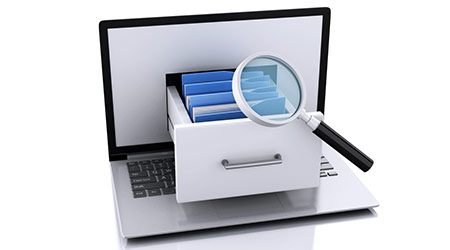Healthcare records are more accessible and available in more formats than ever before, from apps on smartphones to PDFs automatically delivered to patients. It seems like we hear about paradigm shifts in healthcare every week, but that description barely scratches the surface of the information technology changes going on in doctors' offices.
In an effort to make the patient experience more enjoyable and generate better outcomes—more and more, government repayments for services are being tied to proven medical performance—doctors and hospitals are introducing automation and document management software. This creates an easy electronic medical record (EMR) that can follow patients to every appointment and prevent many common errors or dangers in medical care.
What is a medical paradigm shift?
Paradigm shift has a specific meaning when it comes to treatment. Today, the paradigm shift in healthcare models specifically means that old practices and methods are being systematically replaced across most healthcare experiences.
Technology is at the forefront of that shift because physicians, nurses, and other practitioners are able to use new diagnostic tools for routine visits and specialty diagnoses. New tools output their results in digital formats and are able to talk to each other through digital technologies, helping doctors to prevent scary situations like prescribing medication that may harmfully interact with an existing prescription.
Increasing security and accessibility
Today’s medical paradigm shift is addressing healthcare models that rely on new information technology like document management software and traditional office software.
Common platforms like Microsoft Outlook are working their way beyond the front desk and directly into the office or exam room. For example, doctors are using this and other software to quickly set up appointments with specialists as the need arises.
Healthcare information technology (HIT) now has to work with traditional IT, and new services are providing significant support in terms of security and accessibility. The best in HIT offerings even support drag-and-drop operations between care tracking services and traditional appointment or reminder software.
Working with well-known platforms will help the patient feel more in touch with their doctor and can take away some of the fear of the appointment. It also has the potential to improve the efforts of staff, nurses, and doctors by reducing the number of new services and platforms they have to learn as healthcare models change.
HIT changes will also help doctors embrace many of the things patients want. That includes new care models as described in a new PwC report where:
• 42 percent of physicians say they are comfortable relying on at-home testing for some prescriptions.
• 50 percent say telehealth visits could replace some in-office visits.
• 65 percent of clinicians say they are willing to prescribe apps that help manage chronic conditions.
• 79 percent say mobile device use can improve care.
• 50 percent of patients say mobile devices and apps can improve their care.
Healthcare needs a living document
America’s aging population requires more healthcare support in more care scenarios than before, and living documents can help address that concern.
A living document, in the digital age, is a document that’s designed to grow as patient problems, medication, and successes grow. When an older adult moves from home to an assisted living center, they’ll be under the care of new nurses and doctors more often. That means more people providing care and more people who can notice what does and does not work. The healthcare model they experience is growing, and their EMR must too.
For every doctor’s visit, the administration of medication or in-room checkup includes paperwork—a lot of it. Duplication of materials, missed information, and having someone write out their descriptions of service at the end of a long day all come with potential room for errors. Digitizing this process can help solve all of those concerns.
Document management software (DMS) allows every facility to share the most recent set of information and reduce the need to create as much paperwork. Removing clutter makes a practitioner’s day easier, and using DMS that highlights care scenarios or changes can make the patient’s healthcare better. Not only do doctors have all of the files they need as soon as they need it, but care is easier to track even in situations where the patient can’t advocate for themselves.
One of the most important features of any DMS used in the healthcare setting is that it is HIPAA compliant at every interaction point. That means using a system that manages patient care, wills, DNRs, medication records, invoices, staff notes and more in a secure environment. Healthcare models involve new practitioners and digital services—such as diet tracking—so maintaining HIPAA compliance is becoming more complex and more important.
Stick to a service that not only improves patient care and experiences, but that also ensures you do so legally, safely and in a cost-effective manner.
Jesse Wood is the CEO of document management software vendor, eFileCabinet.

 UF Health Hospitals Rely on Green Globes to Realize Their Full Potential
UF Health Hospitals Rely on Green Globes to Realize Their Full Potential How Healthcare Facilities Can Be Truly Disaster-Resilient
How Healthcare Facilities Can Be Truly Disaster-Resilient TriasMD Breaks Ground on DISC Surgery Center for San Fernando Valley
TriasMD Breaks Ground on DISC Surgery Center for San Fernando Valley Bigfork Valley Hospital Falls Victim to Data Breach
Bigfork Valley Hospital Falls Victim to Data Breach AI-Driven Facilities: Strategic Planning and Cost Management
AI-Driven Facilities: Strategic Planning and Cost Management